|
|
Considered a “delicacy” in some circles, veal is one of the cruelest meats money can buy. While both male and female calves are slaughtered for veal, males are the usual victims. The age of calves killed for veal ranges from just born to 24 weeks.
Like humans, mother cows carry their babies for nine months. If allowed, calves nurse until around 10 months of age—just imagine all that bonding time! And like human babies, each calf has a unique personality. These incredible animals form fast friendships with one another that can develop in youth and last a lifetime.
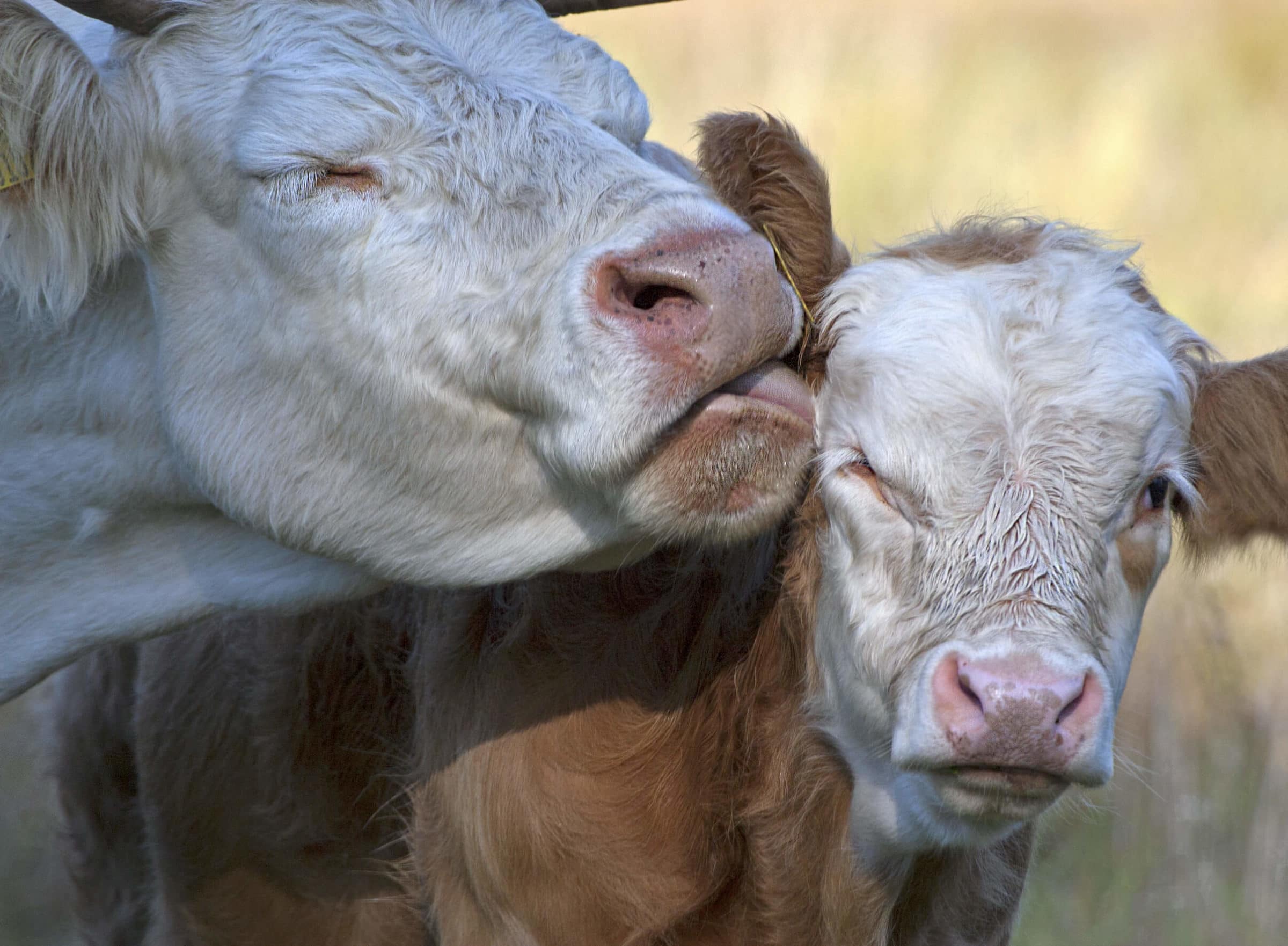
Sadly, calves used for veal never have the chance to bond with their mothers, frolic in the grass, or form friendships with other calves. Instead, their lonely journey begins at a dairy farm.
The Dairy Farm
Some people don’t realize that like humans and other animals, cows must become pregnant to produce milk. To maximize milk production, the dairy industry forces mother cows to produce one calf a year. This means cows at dairy farms spend most of their lives either pregnant or having just delivered a newborn.
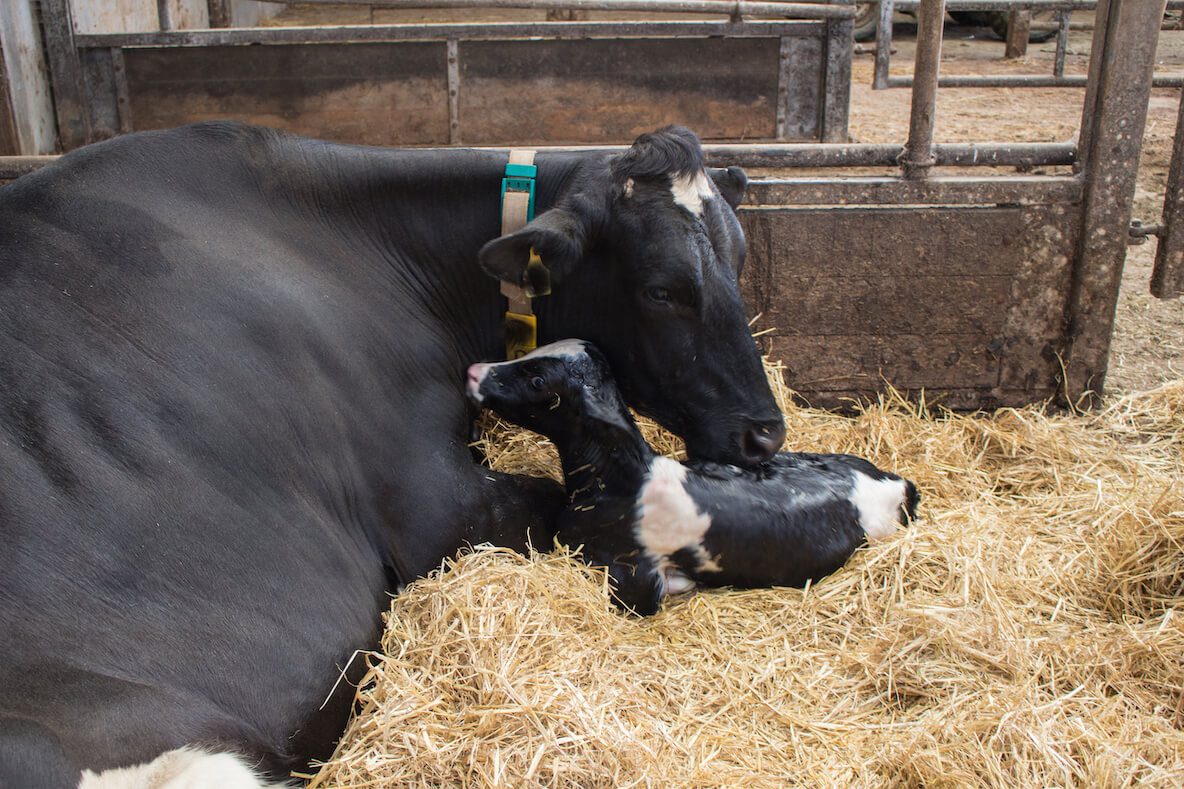
Given the staggering number of calves born at dairy farms each year, many of these babies are considered “surplus.” Males are useless to the dairy industry because they don’t produce milk, and only 30 to 40 percent of females are kept to replace their mothers.
Most dairy farmers separate calves from their mothers within 24 hours of birth. This agonizes both mother and calf, and mother cows are known to pace desperately and bellow for their stolen babies.
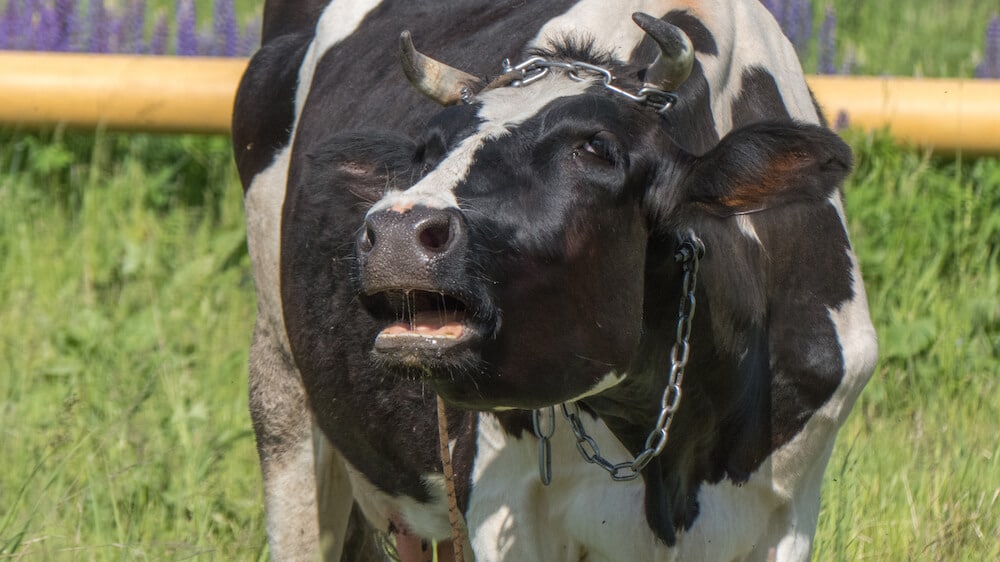
Some farms just kill the babies to avoid the headache of selling them. Methods include shooting and blunt-force trauma.
But for many calves, the next stop is a veal farm.
The Trip
In North America, calves are generally sold for veal in the first weeks of life. This means that fragile newborns are not only wrenched from their mothers’ sides but crammed into transport trucks and driven off to veal farms. Calves lack access to milk during transport, which severely harms their well-being. The greater the distance babies travel, the higher their mortality rate.

In 2019, an investigation by animal rights group Animal Equality revealed calves routinely separated from their mothers within as little as 30 minutes of birth. Their bodies still wet and shaking, the calves awaited transport as the mothers cried out. During the investigation, a driver removed a weakened calf from the truck and abandoned him to suffer for days.
The Veal Farm
Unsurprisingly, U.S. veal farms exist primarily in states with a high concentration of dairy farms, such as Wisconsin, Ohio, Indiana, Pennsylvania, and New York. Indiana strongly outpaces the other states though, with nearly one-third of the country’s veal originating there.
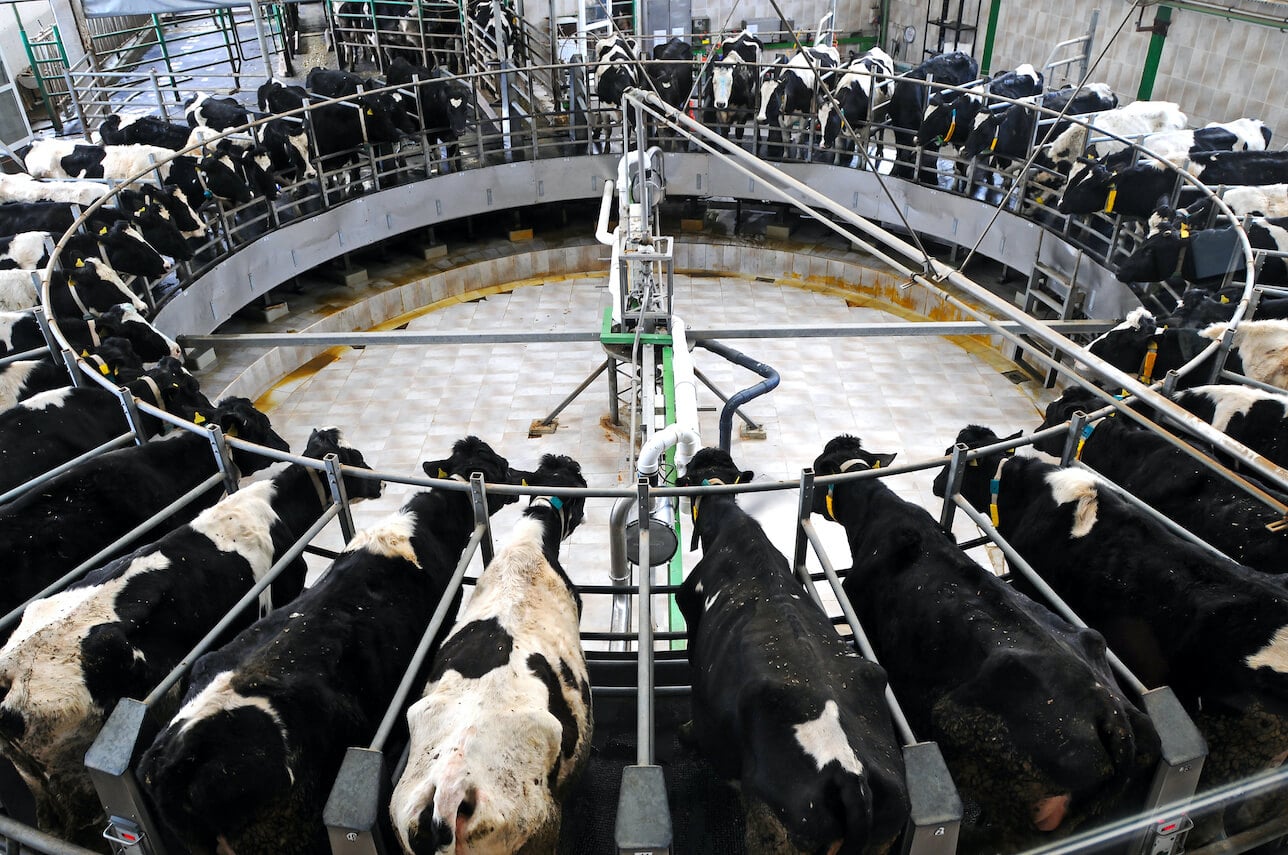
Traditionally, calves used for veal were locked in cramped crates, sometimes even tethered or chained, unable to interact with other animals. Many veal companies claim to have done away with cruel crates, but their claims don’t always check out. A 2019 investigation by Animal Recovery Mission into Midwest Veal revealed calves still housed in crates—despite the company’s claim to the contrary. The investigator documented male calves standing in their own feces, trapped in crates so small the animals couldn’t turn around.
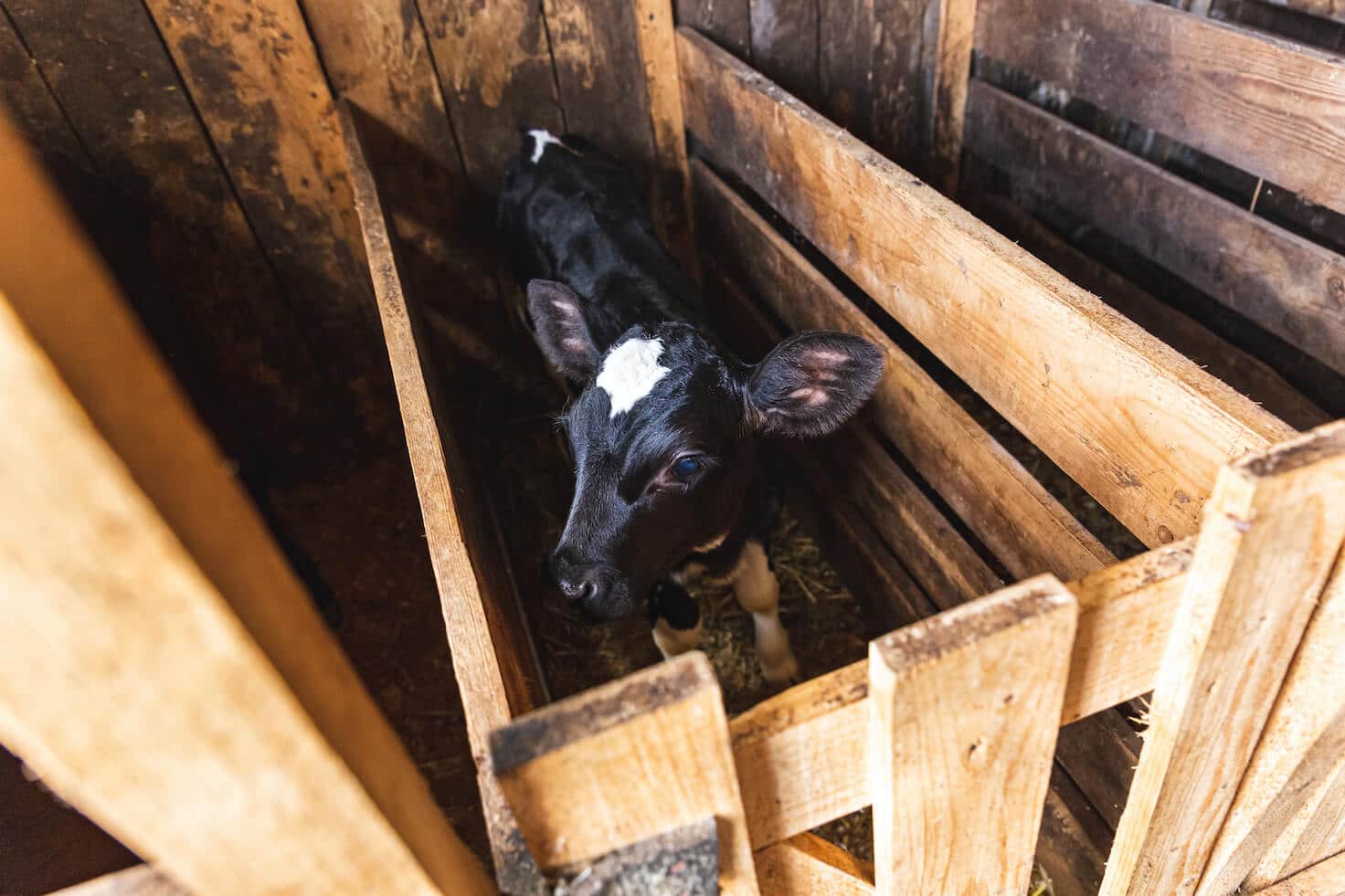
Even the “best” conditions are unacceptable. The veal industry likes to pat itself on the back for its modern group-housing barns. “Group housing” really just means that calves are grouped in small indoor pens, standing on slatted floors, generally under artificial light. They never set a hoof on grass, lie in the sun, run, or even stretch their legs. They never see their mothers again. Instead, they drink artificial milk replacer.
The Slaughterhouse
About 15 percent of U.S. veal comes from “bob veal” calves. These are newborns sent directly to slaughter, some with their umbilical cords still attached. Bob veal often winds up in hot dogs and sandwich meats.
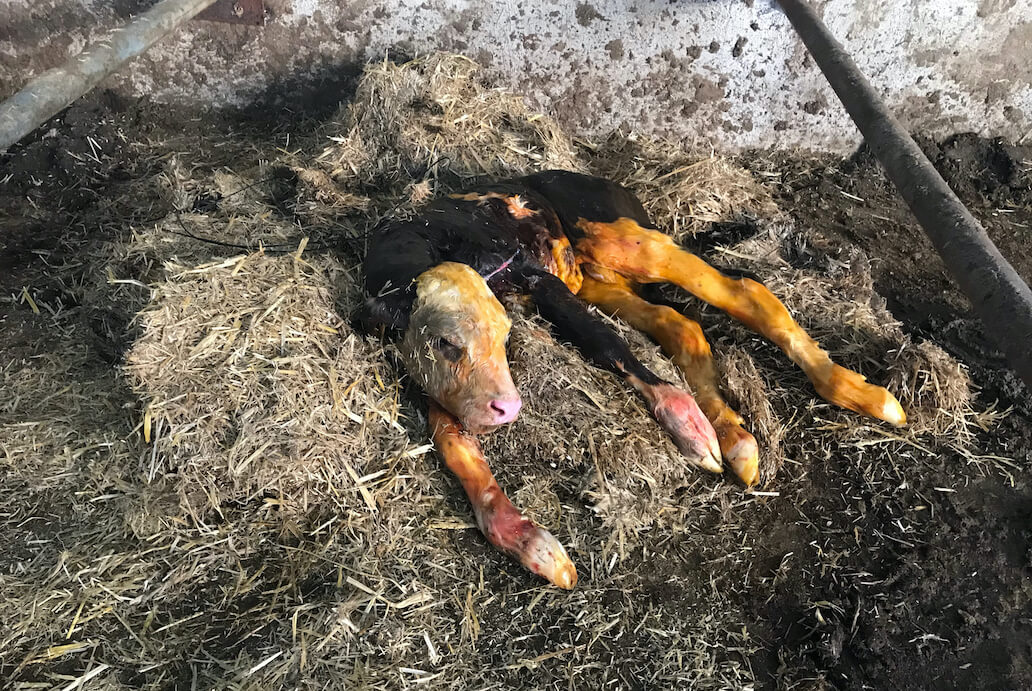
Most calves at veal farms become “special-fed” veal. Confined in small indoor pens, these babies are fed formula until the day they’re killed, at just 18 to 20 weeks old.
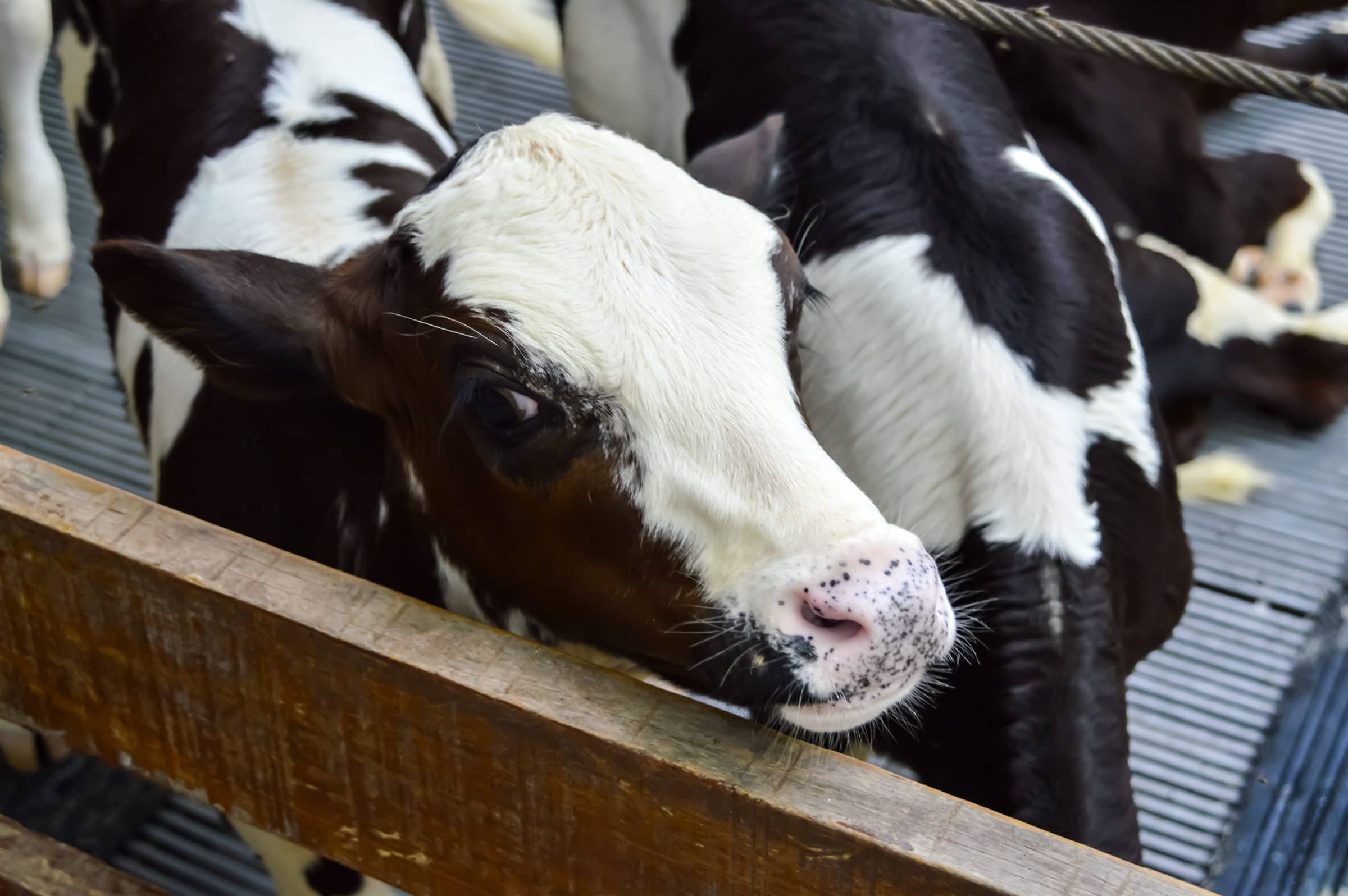
At U.S. slaughterhouses, animals are generally stunned in one of three ways: captive bolt gun, electrocution, or gas. Then their throats are slit, and the animals are hung upside down on a conveyor to bleed out. Sometimes they are not properly stunned and remain conscious when their throats are slit.
The Solution
We can end our support for this cruel industry by choosing plant-based foods and beverages. Remember—the dairy industry directly supplies the veal industry. Paying for dairy means paying for veal. Learn how you can create a kinder world by downloading our free veg starter guide.